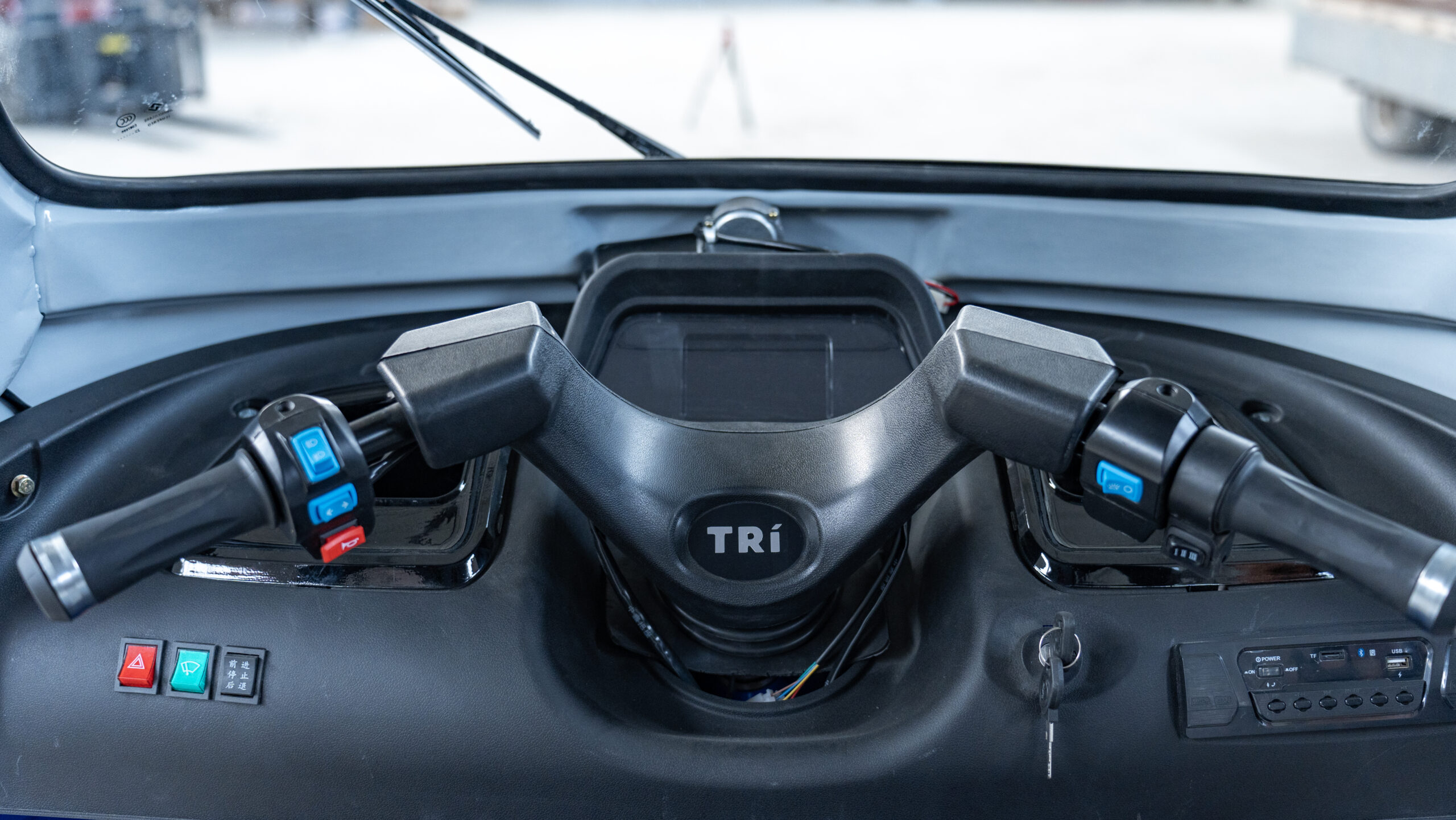TRí Launches Its Next Generation Electric 3-Wheeler In Tanzania
Internal combustion 3-wheelers are one of the main modes of transport in Tanzania. There are an estimated 250,000 ICE 3-wheelers in Tanzania, and TRí wants to lead the transition of this 3-wheeler sector to electric. TRí started commercial operations in October 2022 after spending a lot of time doing research on which type of 3-wheeler would make sense in this environment, market, and specific use cases.
TRí started with its first generation electric 3-wheeler, which they named the E1. Building on the operational learnings from the E1, Tri noticed that factoring in the highest mileage users that go for up to 200km per day, users were quite comfortable with a 2.5 hour charge per day to realize their usual daily range per day. The E2 has a range of 100km+/- range at 40km/h average speed and therefore with a full charge in between their rounds, users could still get close to 200km per day. Therefore, the next generation 3-wheeler comes fully configured with an onboard charger. Tri has not gone for the common battery swapping approach we have seen from other players, especially in the 2-wheeler sector.

TRí’s Niko Kadjaia says, “We made a deliberate choice when we decided to focus on 3-wheelers first. Given the driving patterns that we had identified and the respective downtime of drivers, we saw great potential for opportunity charging, i.e., charging throughout the day at dedicated spots to extend the driving range. Hence, Swapping isn’t a hard requirement for the drivers to be able to meet their daily average kms driven. As a result, our entire operations are lighter / leaner and less capital-intensive. The combination of product-choice, supply-chain optimization and business-model choice allowed us to reach double digit positive gross margins since day 1.’’
TRí has just unveiled the E2, the second generation of its 3-wheeler, in Tanzania, and here are the main specs:
- 100km+ range at 40km/h average speed
- 55km/h top speed
- 4kW electric motor
- 8kWh LFP battery
- 5h charging time (onboard charger)
- Fully digital display with rear camera for easier parking
- Heavy duty suspension to handle the roads in most places
- Outright purchase price – $3,500, excluding VAT, which is at parity with standard ICE 3-wheelers
- Battery warranty is 2,000 cycles

TRí places a lot of focus on customer experience, especially around basic service and maintenance and ensuring the availability of spare parts. TRí has a full manufacturing licence for Tanzania, meaning that they have access to incentives for local assembly which help bring down the retail price of their electric 3-wheeler to price parity with the equivalent ICE 3-wheelers offered in Tanzania. They import completely knocked down kits and then assemble the 3-wheelers in Dar es Salaam.

Financing is also available for approved clients. Currently TRí’s customers are split between 50% on lease-own over 2 years and 50% outright purchase. TRí says the company has a very robust KYC process which helps them provide the financing service. Their customers range from 3-wheeler taxis which are quite common in Tanzania, and also businesses that use the 3-wheelers for deliveries and other logistical aspects of their business.


Charging at TRí’s charging stations costs 2,500 shillings to charge to full, which is approximately $1, plus a 1,000 shilling charger access fee. This works out to $1.50 for a full charge, which is way lower than the $10 one would need to spend on petrol to get the same range on an ICE 3-wheeler. With all the other costs included such as oil changes and servicing, customer feedback shows user savings have resulted in some customers increasing their savings by anything from 2X to 4X depending on the various use cases. Some of the really good feedback from users who used to drive ICE 3-wheelers is that dealing with the clutch and changing gears on the ICE ones is really cumbersome, and hence switching to the electric 3-wheelers has resulted in a massive improvement in terms of their driving experience.

The E2 comes with an always-on IoT which allows for remote monitoring of the battery’s state of charge, general vehicle performance, and driver behavior monitoring. Niko adds, “Here, we look at overall driving patterns (balanced driving, sudden acceleration / stops etc). Furthermore, we equipped the E2 with our own CAN system, which among other things allows for improved maintenance and vehicle diagnosis as specific errors have their own unique code.’’
It’s great to see the introduction of these electric 3-wheelers in Tanzania, a market where 3-wheelers play a key role in the transport ecosystem. Electrifying this sector will go a long way in reducing emissions from the sector as well as improving overall operational efficiencies for players in the sector.
Images courtesy of TRí
Have a tip for CleanTechnica? Want to advertise? Want to suggest a guest for our CleanTech Talk podcast? Contact us here.
Latest CleanTechnica.TV Video

CleanTechnica uses affiliate links. See our policy here.

